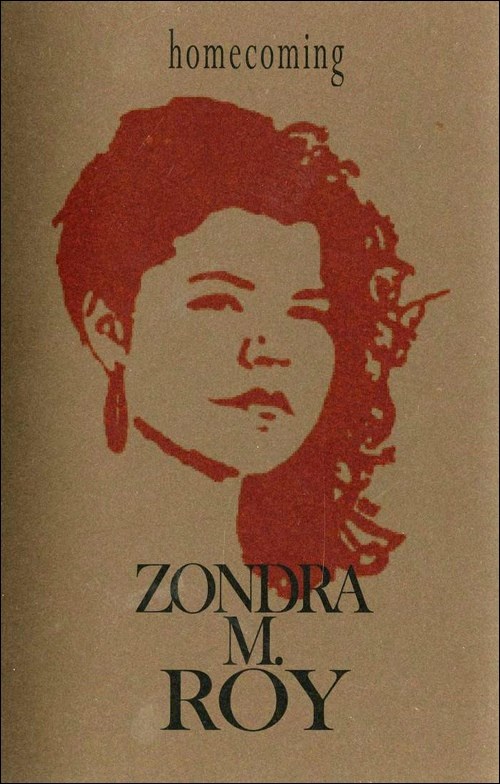By Zondra M. Roy
Published by Jackpine Press
$30 ISBN 978-1-927035-20-7
Sometimes the lines between genres blur. As I began reading Zondra M. Roy’s chapbook, homecoming , I thought, “looks like poetry, feels like a first-person essay.” This isn’t poetry filled with similes, metaphors, alliteration and finely-crafted images, this is a straight-up story (with line breaks) that shouts. “This is how it’s been, I’ve made mistakes, and I’m grateful for the people and activities (like performing hip hop) that have helped me along the way.”
The Dené Cree/Métis writer left home at 13 and she doesn’t hold back on her life’s gritty details as she writes of bouncing between various homes in Saskatchewan, Manitoba, Ontario, New Brunswick (“for a few months”) and British Columbia. Actually, the word home is a misnomer here — no warm connotations of homemade bread and a family sitting around a fireplace exist when one’s stays include a juvenile detention centre in Saskatoon (jail) and that hardest of beds – the street.
Roy begins her story with family history: “ My parents were born into a society that was built to facilitate their failures … they were native people in the northern prairies.”
Strong language and a strong voice, legitimized by the vernacular — “It wasn’t until I moved to Saskatoon that I seen Native MCs” — and, ironically, by the lack of memory. “I tried to get through grade eight\but I don’t think I got through grade eight.” After she “got jacked” on the street, she moved in with her 17-year-old sister, a single mother doing all she could to rise up from an abusive relationship, including “trying to push a 4x4 stroller across the\street in the snow.”
The sheer honesty in this writing is impressive. “I never hurt anyone\until I did” Roy writes. On the streets “It was easier to give up,\to be a statistic,\to align with society’s desire for me.” Imagine a teenaged girl trying to straighten out her life. She returns to school on Saskatoon’s west side and gets a job at a sandwich shop. “I remember chopping tomatoes,\And the guy next to me was weighing cocaine.”
This is not usually the stuff of poetry. Again, the honesty — and the humility — to write about dyeing hair “with a red bingo dabber” and “learning to count with burnt streetlights on \15th Avenue East in Prince Albert” is admirable. This is a poetry of stealing clothes from apartment dryers and off clotheslines, of Christmas in jail, of being stabbed and finding the hospital queue too long, so she “put a Kleenex on it, and taped it together.”
Eventually the writer found hip hop culture, and began seeking knowledge and setting both broad goals, ie: “ At the very least I wanted to work with people” and some specific ones : “get to know Saskatchewan,\get to know Canada, different places around the world\get to know my community. ”
The long poem\memoir spreads across most of this chapbook, but it concludes with four poems I can clearly hear delivered in a hip-hop beat.
Does the speaker ever truly find home? Eventually, yes. “Home becomes where [her] heart is safe.”
This book is available at your local bookstore or from the saskatchewan publishers group www.skbooks.com.



